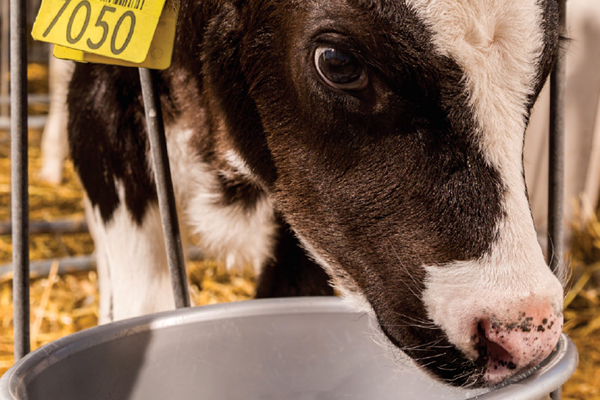Prime
Caring for calves

Usually, most dairy calves are weaned based on age, three months being the most preferred by farmers.
What you need to know:
- Usually, most dairy calves are weaned based on age, three months being the most preferred by farmers.
- You can castrate your male calves by using an elastrator ring, burdizzo or open castration using a knife. You should castrate your calves while they are still young to promote faster healing.
I have ventured into livestock farming and majoring in dairy farming. I need some tips on how to maintain the calves. Aloysius Mugisha
Dear Mugisha
The most important aspect in taking care of calves is the feeding and housing. When the calf is left with the dam when it has attained one week, several methods can be used for its feeding depending on ease and convenience. Some of the methods you can try include:
Single suckling
This method involves separating the calf from the mother then bringing them together.
The calf is then allowed to suckle before or after milking. The amount of milk the calf consumes is difficult to estimate.
Multiple suckling
In farms where several cows give birth at the same time, one cow can be assigned to several calves depending on milk production. Each calf suckles in its own turn in its designated teat. This method is, however, not common.
Nipple suckling
Here, you fill milk in a plastic bottle with a nipple and train the calf to suckle just as you would do for a baby.
You can also use a pipe with an attached nipple with the other end inserted in a bucket of milk.
Bottle feeding
In this method, you fill a bottle with milk and feed it directly to the calf. This method is tedious and you risk getting milk in the calf’s trachea leading to pneumonia.
Bucket feeding
This is the most common method used in feeding calves. You place some milk into a bucket and then train your calf to drink by placing your finger in the milk and as calf suckles to mimic the cow’s teat. Whichever method you use, ensure the equipment is clean at all times.
First week
You should allow calves to suckle to obtain colostrum from their mothers’ dams. Suppose the mother is unable to produce milk or dies at calving, artificial, or frozen colostrum or a contemporary mother can be used.
You should feed your calves with milk about 10 per cent of their body weight. Milk can be mixed with whey or skim milk and fed to the calf at body temperature. Commercial milk replacers also are used at this stage.
Preserved colostrum
High yielding cows may produce more colostrum than the calf can consume which can be preserved and fed later.
The colostrum can be preserved by freezing or through natural fermentation. You can feed this later to the calf by mixing it with warm water at the ratio of two parts colostrum to one part water.
Milk replacers
Milk replacers resemble milk and are mostly used when there is no milk to feed the calf. They are always of lower quality than whole milk and you should only use it if it becomes cheaper than milk.
Pre-starter
A pre-starter is a high-quality calf feed that is low in fibre and almost similar to milk replacer in form of dry pellets. You can feed this to your calves during the second and third week to help stimulate calves to eat dry feed and also to enhance rumen development.
Calf starter
These contain a higher fibre content compared with the pre-starter. At this stage, your calf should be consuming little milk and is in the transition to becoming a ruminant.
Roughage
You can also feed your calves’ high-quality hay with fine texture and mixed with legumes such as sweet potato vines. If they are on pasture, you should try and graze calves ahead of adults to control parasites.
Water
Calves should be offered fresh water in addition to milk. Lack of drinking water slows down digestion and development of the rumen, and hence the longer it takes before calves can be safely weaned. Always ensure that water is available all the time.
Weaning
Usually, most dairy calves are weaned based on age, three months being the most preferred by farmers.
Weaning should be done gradually to minimise stress. You can start weaning the calf when:
It attains twice its birth weight when the calf can consume 1.5 per cent of its body weight of dry feed.
At 12 weeks
You can adopt early weaning when your calf attains between five and eight weeks. This will reduce the milk feeding period and labour required for rearing your calf.
To do this, your calf will require a specific feeding programme that concentrates on using low levels of milk and high energy, high protein concentrates, (pelleted) to stimulate rumen development.
Castration
You should castrate male calves to prevent unwanted mating where male and female cattle are reared together in one herd. Also, castrated males are easier to handle and they produce better quality meat.
You can castrate your male calves by using an elastrator ring, burdizzo or open castration using a knife. You should castrate your calves while they are still young to promote faster healing.
Identification
Identification of calves should be done immediately after birth to allow efficient and proper recording.
Answered by Tom Okello Anyi a mixed farmer, Lira District




